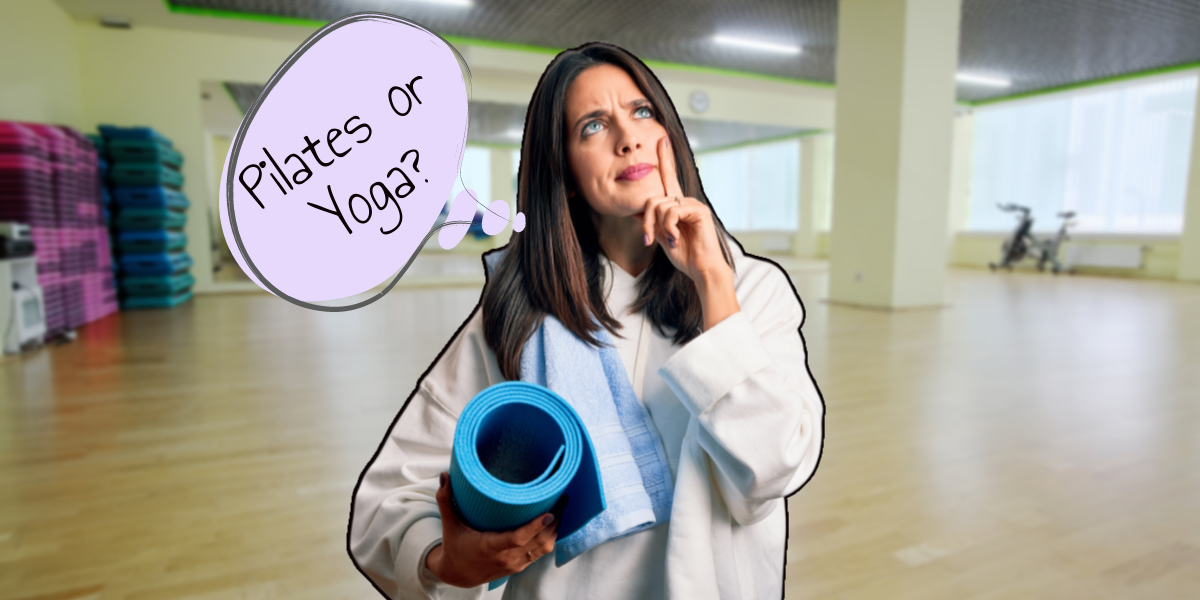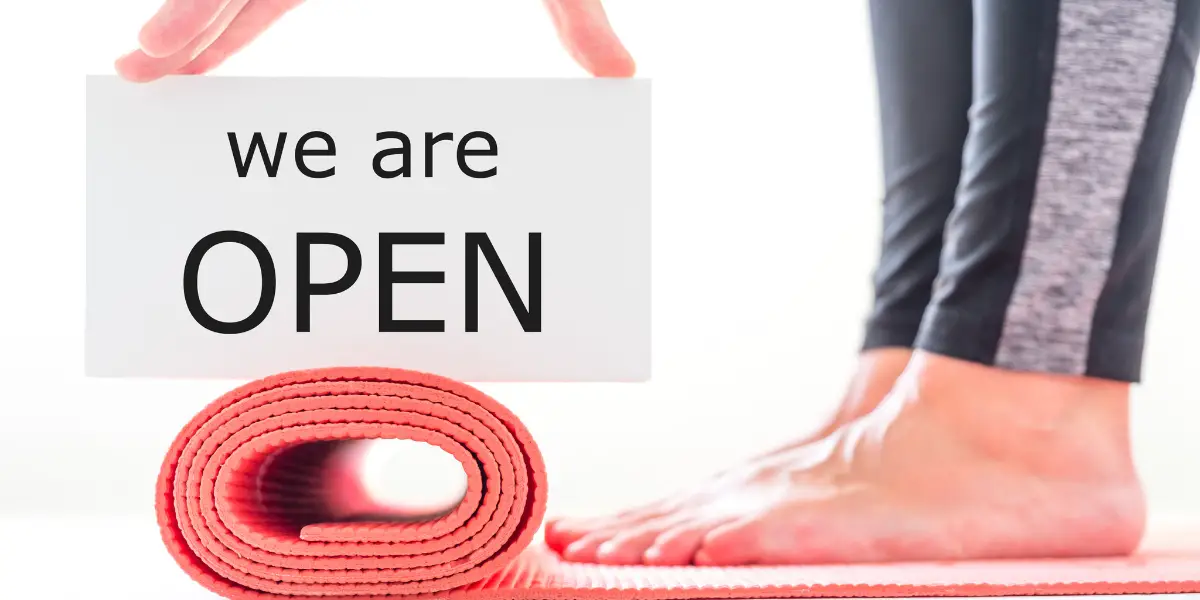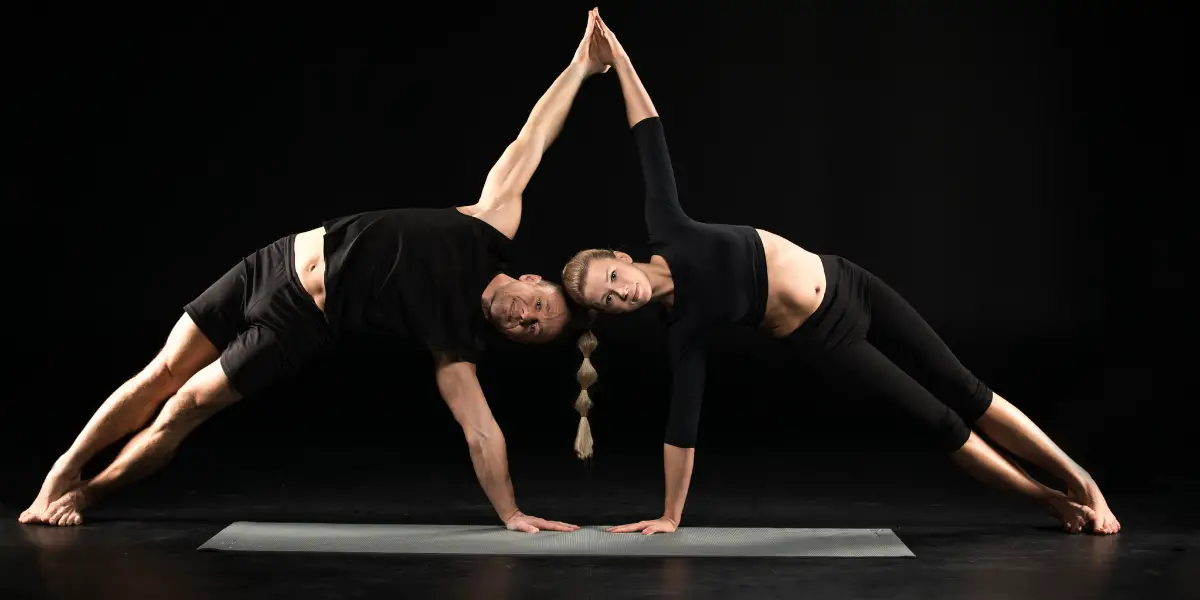If you’re looking for a low-impact exercise that can help improve your flexibility, balance, and strength, you might be wondering whether to try mat Pilates or yoga.
Mat Pilates and Yoga are both great forms of exercise that focus on improving flexibility, strength, and mindfulness. While both practices share similarities such as the use of a mat and a focus on controlled movements and breathing, there are also some key differences.
Mat Pilates is more focused on building core strength and working on smaller muscle groups, while yoga incorporates more full-body movements, stretches, and poses. Additionally, Pilates tends to have a more structured and controlled approach, while yoga can be more fluid and free-form.
Both are popular forms of exercise that can be done at home or in a studio, and both focus on using your body weight as resistance. However, there are some key differences between the two that might make one a better fit for you than the other.
Mat Pilates is a form of exercise that was developed by Joseph Pilates in the early 20th century. It involves a series of movements that are designed to improve your core strength, flexibility, and posture. Unlike yoga, which often involves holding poses for several breaths, mat Pilates movements are typically done in a flowing sequence, with each movement flowing into the next. This can make it a good choice if you prefer a more dynamic, fast-paced workout.
Mat Pilates
Mat Pilates is a low-impact workout that focuses on building strength, improving balance, and increasing flexibility. It was developed by Joseph Pilates in the early 20th century and has since become a popular exercise routine around the world.
Benefits
Mat Pilates offers a range of benefits for your body and mind. It can help improve your posture, increase core strength, and reduce the risk of injuries. It also promotes better breathing techniques and mindfulness, which can help you relax and reduce stress levels.
Exercises
Mat Pilates exercises are typically performed on a mat and use your body weight as resistance. Some of the most common exercises include the Hundred, the Roll-Up, and the Swan. These exercises focus on building core strength, improving spine mobility, and increasing muscle endurance.
Mat Pilates can be done with little to no equipment, but some props like resistance bands or small balls can be used to add variety and challenge to your routine.
When performing Mat Pilates exercises, it’s important to focus on control and precision. Movements should be slow and deliberate, with a focus on proper form and alignment. This will help you get the most out of your workout and reduce the risk of injury.
Materials and Equipment
To perform Mat Pilates, you will need a mat that provides enough cushioning and support for your body. Pilates mats are typically thicker and denser than yoga mats, and are made from materials like PVC or rubber.
When choosing a Pilates mat, look for one that provides enough traction to prevent slipping, but is not too sticky. The mat should also be wide enough to accommodate your body and provide enough space for movement.
Mat Pilates can be done with little to no equipment, but some props like resistance bands or small balls can be used to add variety and challenge to your routine.
Beginners
Mat Pilates is a great exercise routine for beginners, as it is low-impact and can be modified to suit different fitness levels. It’s also a great way to build body awareness and improve core stability.
If you’re new to Mat Pilates, it’s important to start with the basics and work your way up to more challenging exercises. This will help you build a strong foundation and reduce the risk of injury.
Injuries and Physical Rehabilitation
Mat Pilates is a low-impact workout that can be beneficial for people with joint pain, arthritis, or mobility issues. It can also be used as a form of physical rehabilitation for people recovering from injuries or surgeries.
However, it’s important to consult with your doctor or a certified Pilates instructor before starting any exercise routine, especially if you have any pre-existing medical conditions.
Budget
Mat Pilates is a relatively inexpensive exercise routine, as it can be done with little to no equipment. However, if you want to add props like resistance bands or small balls to your routine, these can be purchased for a relatively low cost.
Overall, Mat Pilates is a great exercise routine for building strength, improving flexibility, and promoting better posture and body awareness. Whether you’re a beginner or an experienced fitness enthusiast, Mat Pilates can help you achieve your fitness goals and improve your overall health and well-being.
Yoga
Yoga is a popular practice that has been around for thousands of years. It originated in India and has since spread all over the world.
There are many different types of yoga, each with its own unique benefits and styles. Whether you are a beginner or an experienced practitioner, yoga is a great way to improve your strength, balance, flexibility, posture, and overall health.
Benefits
Yoga has many benefits for both your body and mind. It can help you to improve your flexibility, increase your strength, and develop better balance. Yoga is also great for improving your posture and reducing the risk of injuries. Practicing yoga can help you to feel more relaxed and calm, and can be a great way to reduce stress and anxiety. Yoga has also been shown to be beneficial for your heart health and can help to improve your overall fitness levels.
Types
There are many different types of yoga, each with its own unique benefits and styles. Some of the most popular types of yoga include:
- Hatha Yoga: This is a gentle form of yoga that is great for beginners. It focuses on basic poses and breathing techniques.
- Vinyasa Yoga: This is a more dynamic form of yoga that involves flowing from one pose to another. It is great for building strength and improving flexibility.
- Restorative Yoga: This is a very gentle form of yoga that is great for relaxation and stress relief. It involves holding poses for longer periods of time with the help of props like blocks and blankets.
- Kundalini Yoga: This is a more spiritual form of yoga that involves chanting, meditation, and breathing techniques.
No matter what type of yoga you choose, it is important to listen to your body and practice at your own pace. If you are a beginner, it is best to start with a gentle form of yoga like Hatha or Restorative yoga.
Props
Yoga props like blocks, blankets, and straps can be very helpful for beginners or for those who have injuries or mobility issues. Blocks can be used to help you to reach the floor in certain poses, while blankets can be used to support your body in restorative poses. Straps can be used to help you to deepen your stretches and improve your flexibility.
Budget
Yoga can be a very affordable practice, especially if you practice at home or in a community setting. Many yoga studios offer discounted rates for new students or for those who can’t afford the full price. There are also many free yoga classes available online or in local parks.
Precision
Yoga is all about precision and body awareness. It is important to pay attention to your body and to make sure that you are practicing the poses correctly. This can help to prevent injuries and improve your overall practice.
Mindfulness
Yoga is also a great way to develop mindfulness and to become more present in the moment. By focusing on your breath and your body, you can learn to quiet your mind and reduce stress and anxiety.
Conclusion
Whether you are a beginner or an experienced practitioner, yoga is a great way to improve your strength, balance, flexibility, posture, and overall health. With so many different types of yoga available, there is sure to be a style that is right for you. So why not give yoga a try and see how it can benefit your body and mind?
Mat Pilates vs Yoga
If you’re looking for a low-impact workout that can help you build strength, improve your flexibility, and reduce stress, you might be considering either mat Pilates or yoga. While both forms of exercise can be beneficial, they have some key differences and similarities that you should be aware of before you decide which one to try.
Differences
Mat Pilates is a form of exercise that focuses on building core strength, improving posture, and increasing muscle tone. It typically involves a series of movements that are done on a mat, using your own body weight as resistance. Pilates can be more challenging for those with decreased mobility or poor core strength.
Yoga, on the other hand, is a practice that combines physical postures, breathing exercises, and meditation. It can help you build strength, flexibility, and endurance, as well as reduce stress and improve your overall well-being. Yoga typically involves holding poses for longer periods of time and flowing from one pose to another.
One of the main differences between mat Pilates and yoga is the focus on core strength. While both forms of exercise can help you build a strong core, Pilates is specifically designed to target the muscles in your abdomen, lower back, and hips. Yoga, on the other hand, can help you build strength and flexibility in your entire body.
Similarities
Despite their differences, mat Pilates and yoga have some similarities. Both forms of exercise can be done on a mat, making them accessible to people of all fitness levels. They are also both low-impact workouts, which means they are gentle on your joints and can be a good option for people with injuries or chronic pain.
Both mat Pilates and yoga also require precision and focus. In Pilates, you need to pay attention to your form and alignment to get the most out of each movement. In yoga, you need to focus on your breath and stay present in the moment to achieve a state of relaxation and inner peace.
Conclusion
Whether you choose mat Pilates or yoga depends on your personal preferences, fitness goals, and physical abilities. Pilates is a great option if you want to focus on building core strength and improving your posture, while yoga can help you build strength and flexibility in your entire body while reducing stress. Ultimately, the best workout for you is the one that you enjoy and that helps you achieve your goals.




